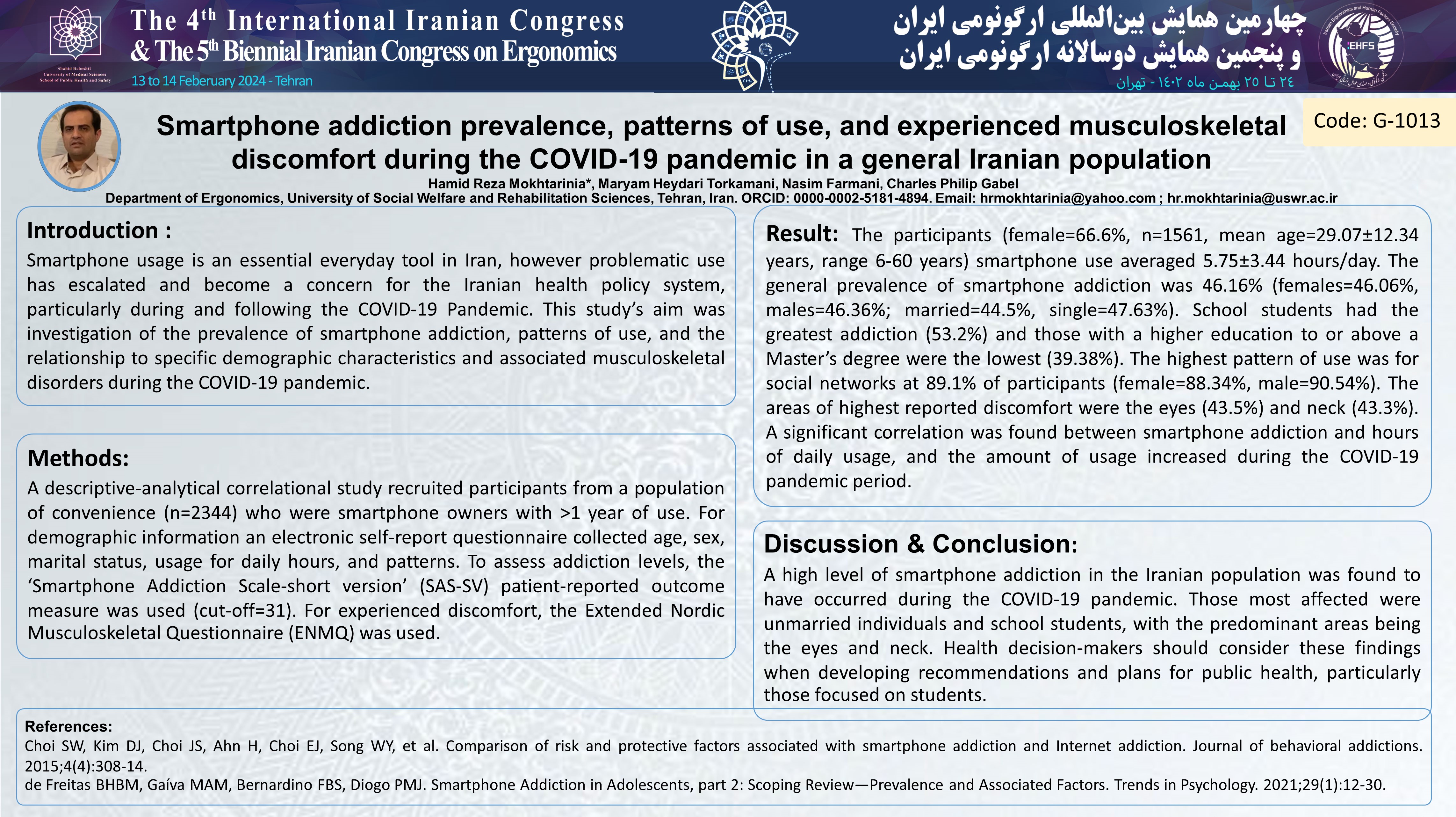Smartphone addiction prevalence, patterns of use, and experienced musculoskeletal discomfort during the COVID-19 pandemic in a general Iranian population
Code: G-1013
Authors: Hamid Reza Mokhtarinia © ℗, Maryam Heydari Torkamani2, Nasim Farmani
Schedule: Not Scheduled!
Download: Download Poster
Abstract:
Introduction
Smartphone usage is an essential everyday tool in Iran, however problematic use has escalated and become a concern for the Iranian health policy system, particularly during and following the COVID-19 Pandemic. This study’s aim was investigation of the prevalence of smartphone addiction, patterns of use, and the relationship to specific demographic characteristics and associated musculoskeletal disorders during the COVID-19 pandemic.
Methods and Materials / Case Report
A descriptive-analytical correlational study recruited participants from a population of convenience (n=2344) who were smartphone owners with 1 year of use. For demographic information an electronic self-report questionnaire collected age, sex, marital status, usage for daily hours, and patterns. To assess addiction levels, the ‘Smartphone Addiction Scale-short version’ (SAS-SV) patient-reported outcome measure was used (cut-off=31). For experienced discomfort, the Extended Nordic Musculoskeletal Questionnaire (ENMQ) was used.
Results
The participants (female=66.6%, n=1561, mean age=29.07±12.34 years, range 6-60 years) smartphone use averaged 5.75±3.44 hours/day. The general prevalence of smartphone addiction was 46.16% (females=46.06%, males=46.36%; married=44.5%, single=47.63%). School students had the greatest addiction (53.2%) and those with a higher education to or above a Master’s degree were the lowest (39.38%). The highest pattern of use was for social networks at 89.1% of participants (female=88.34%, male=90.54%). The areas of highest reported discomfort were the eyes (43.5%) and neck (43.3%). A significant correlation was found between smartphone addiction and hours of daily usage, and the amount of usage increased during the COVID-19 pandemic period.
Conclusion
A high level of smartphone addiction in the Iranian population was found to have occurred during the COVID-19 pandemic. Those most affected were unmarried individuals and school students, with the predominant areas being the eyes and neck. Health decision-makers should consider these findings when developing recommendations and plans for public health, particularly those focused on students
Key Words
Smartphone, Social Networking, Pain, Prevalence, Risk Factors.
Comments (0)
Post a comment
Post comment is closed by admin.
